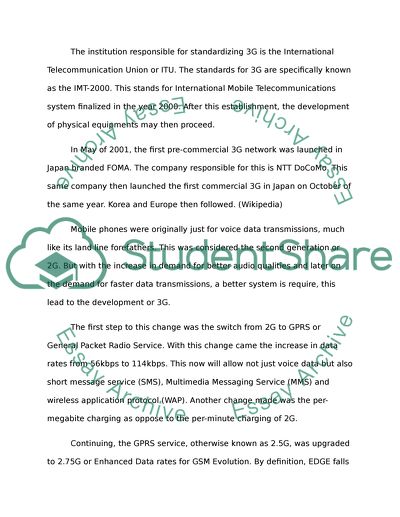Cite this document
(“3G Network Essay Example | Topics and Well Written Essays - 1750 words”, n.d.)
3G Network Essay Example | Topics and Well Written Essays - 1750 words. Retrieved from https://studentshare.org/information-technology/1527789-3g-network
3G Network Essay Example | Topics and Well Written Essays - 1750 words. Retrieved from https://studentshare.org/information-technology/1527789-3g-network
(3G Network Essay Example | Topics and Well Written Essays - 1750 Words)
3G Network Essay Example | Topics and Well Written Essays - 1750 Words. https://studentshare.org/information-technology/1527789-3g-network.
3G Network Essay Example | Topics and Well Written Essays - 1750 Words. https://studentshare.org/information-technology/1527789-3g-network.
“3G Network Essay Example | Topics and Well Written Essays - 1750 Words”, n.d. https://studentshare.org/information-technology/1527789-3g-network.


